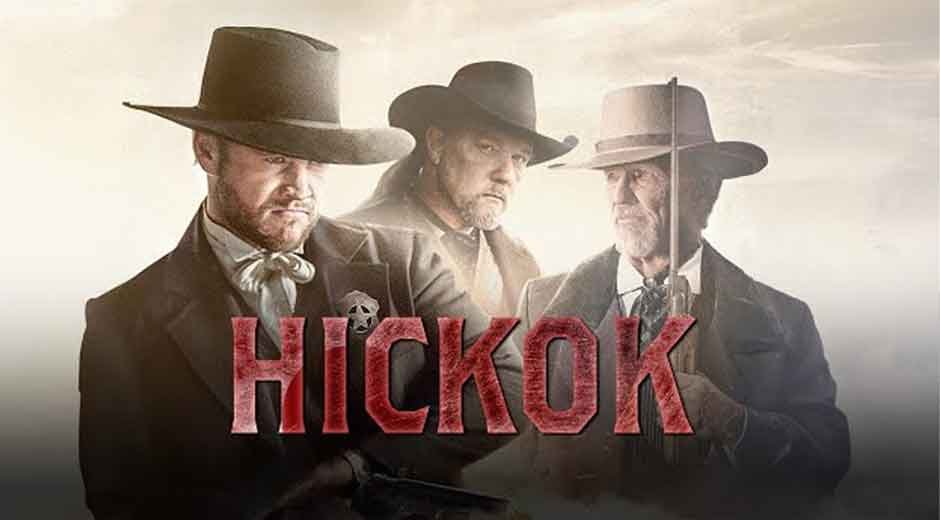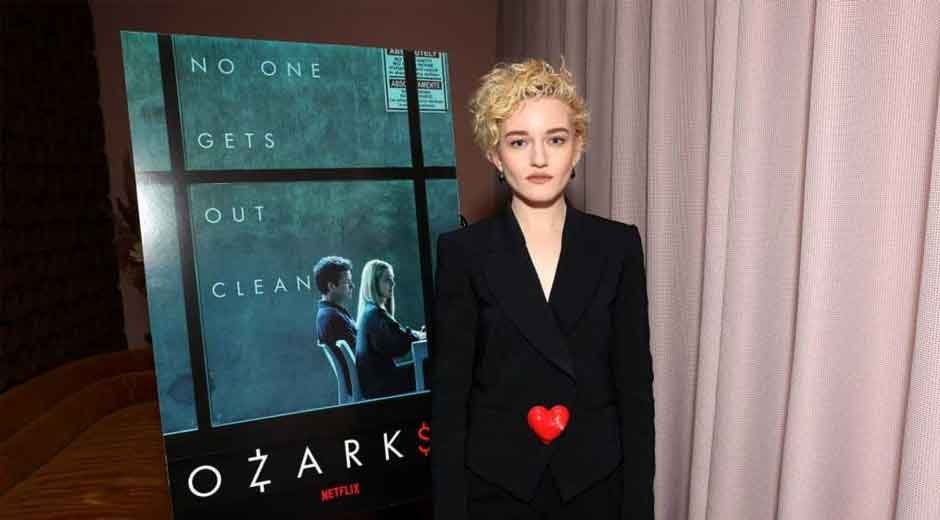An independent western that honors frontier traditions while bringing fresh perspective to a legendary figure
A Modern Take on Western Legend
When was the last time you saw a good old-fashioned western in theaters? If you’re like most moviegoers, it’s probably been a while. Hollywood’s big studios have pretty much given up on the genre, but that doesn’t mean the frontier spirit is dead. Independent filmmakers are keeping it alive, and “Hickok” from 2017 is a perfect example of why that matters.
Luke Hemsworth—yes, one of those Hemsworths—takes on the legendary Wild Bill Hickok in this Timothy Woodward Jr. film. You might expect another generic western retread, but this one actually brings something fresh to the table. Instead of just recycling the same old gunslinger clichés, it digs into what made Hickok such a compelling figure in the first place.
The film focuses on Hickok’s time cleaning up Abilene, Kansas, and it’s got the kind of supporting cast that makes western fans sit up and take notice. We’re talking Kris Kristofferson, Bruce Dern, and country star Trace Adkins all bringing their A-game to this hickok filmovi.
The Story Behind the Film
“Hickok” hit screens on July 7, 2017, with an $8 million budget and a clear mission: give western fans the kind of movie they’ve been missing. Director Timothy Woodward Jr. wasn’t trying to reinvent the wheel here—he just wanted to tell a solid story about one of the West’s most famous lawmen.
The plot is straightforward enough: Wild Bill gets hired to tame Abilene, one of the roughest cow-towns you could imagine. It’s 1871, and the place is crawling with cowboys, gamblers, and every kind of troublemaker you can think of. Hickok’s job is to bring some order to the chaos, but that’s easier said than done when your reputation precedes you everywhere you go.
What’s interesting is how the film handles the historical stuff. Yeah, Hickok really was marshal of Abilene, and he really did deal with characters like John Wesley Hardin. But screenwriter Michael Lanahan isn’t trying to make a documentary here. He uses the real events as a jumping-off point for exploring bigger themes about reputation, justice, and what happens when your legend becomes bigger than you are.
The approach works because it gives the story weight without getting bogged down in historical minutiae. This isn’t a history lesson—it’s entertainment that happens to be rooted in real events.
Luke Hemsworth’s Fresh Take on Wild Bill
Here’s where things get interesting. Most actors who play Hickok go for the full frontier showman look—long hair, fancy mustache, the whole nine yards. Luke Hemsworth throws all that out the window. His Hickok is clean-shaven except for a neat beard, and he carries himself more like a professional lawman than a Wild West showboat.
It’s a smart choice that immediately sets this version apart. Hemsworth’s Hickok feels dangerous, but in a controlled way. When he tells someone “I need hardly remind you that I never miss,” you believe him because he’s not trying to impress anyone—he’s just stating a fact.
The Australian actor brings a gravelly voice and steely-eyed intensity that works perfectly for the character. He finds moments of humor without turning Hickok into a joke, and he makes the legendary gunslinger feel like a real person dealing with real problems. That’s not as easy as it sounds when you’re playing someone who’s already larger than life.
Critics picked up on this too. They noted how Hemsworth manages to humanize Hickok without diminishing what made him legendary in the first place. It’s a tricky balance, but he pulls it off.
Western Veterans Steal Scenes
One of the best things about “Hickok” is watching seasoned pros work their magic in supporting roles. Trace Adkins, who’s made quite a name for himself in western films, plays the villain Phil Poe with just the right amount of menace. The guy’s got a voice like thunder and the physical presence to match, making him a perfect frontier bad guy.
Kris Kristofferson shows up as the mayor who hires Hickok, and he brings that weathered gravitas that made him a western icon decades ago. His scenes with Hemsworth crackle with tension—you can feel the political calculations happening behind his eyes as he tries to balance what’s right with what’s practical.
Bruce Dern pops up as the town doctor, and even in a small role, he’s memorable. There’s something darkly funny about his character cheerfully explaining how violence is good for his medical practice. It’s the kind of sardonic touch that keeps the film from taking itself too seriously.
Cameron Richardson handles the romantic subplot as Mattie, and thankfully, she’s not just there to look pretty or get rescued. Her character feels like she belongs in this world, with her own motivations and connections to both Hickok and the town’s power structure.
Independent Filmmaking Challenges
Making a western on an $8 million budget means picking your battles carefully. Timothy Woodward Jr. and his team focused on what matters most: character development and solid performances. You won’t find elaborate action sequences or expensive special effects here, but you will find authentic storytelling.
The film was shot entirely in California—Agoura and Santa Clarita standing in for Kansas. These locations have been used for westerns since the genre began, so they bring instant authenticity. Cinematographer Pablo Diez keeps things simple and effective, letting the performances drive the story without getting fancy with the camera work.
The 88-minute runtime shows smart editing choices. There’s no padding here—every scene serves a purpose, and the story moves at a pace that keeps you engaged without feeling rushed. It’s the kind of efficient storytelling that independent films need to master.
Andrew Joslyn’s score hits all the right western notes without overwhelming the action. The production design and costumes look authentic within the budget constraints, creating a believable frontier town that doesn’t feel cheap or fake.
The Real Wild Bill Hickok
Understanding the real James Butler Hickok makes the film more interesting. Born in 1837, he was already a legend by the time he reached Abilene. He’d been a Union spy during the Civil War, worked as a scout, and built a reputation as someone you didn’t want to cross.
Abilene in 1871 was exactly the kind of place that needed someone like Hickok. It was the end of the line for cattle drives from Texas, which meant it attracted every kind of character the frontier had to offer. The previous marshal had been killed, and the town was desperate for someone with Hickok’s skills and reputation.
The film gets the essential dynamics right, even if it plays fast and loose with specific details. Hickok really did encounter John Wesley Hardin, and their relationship was as complex as the movie suggests. Both men were legends in their own right, representing different approaches to frontier justice.
Hickok’s time in Abilene ended in December 1871, and he was dead five years later—shot in the back during a poker game in Deadwood. The “dead man’s hand” he was holding (aces and eights) became part of western lore.
Critics and Audiences Weigh In
“Hickok” got the kind of reception you’d expect for an independent western—mixed but respectful. Variety called it “A Fresh Spin on Wild Bill’s Legend,” praising its sincerity even while noting some rough edges. The Hollywood Reporter highlighted the strong performances, especially from the veteran supporting cast.
The numbers tell the story: 50% on Rotten Tomatoes, 49 on Metacritic, and 4.6/10 on IMDb. That’s pretty typical for independent westerns, which tend to divide audiences between genre fans who appreciate any new entry and general viewers who expect bigger production values.
Common criticisms focused on continuity errors and predictable plot points. Some viewers couldn’t get past the low-budget feel, while others felt the story was too familiar. But supporters appreciated the commitment to traditional western storytelling and the solid performances from actors who clearly understood the genre.
The polarized response is actually pretty normal for this kind of film. Independent westerns are made for a specific audience, and if you’re not part of that audience, you’re probably not going to love what you see.
Keeping the Western Spirit Alive
“Hickok” might not be the greatest western ever made, but it serves an important purpose in 2017’s entertainment landscape. While major studios chase superhero blockbusters and franchise properties, films like this keep the frontier spirit alive for viewers who still appreciate a good old-fashioned story about right and wrong.
The film arrived during a mini-renaissance for westerns, with “Hell or High Water” earning Oscar nominations and shows like “Westworld” finding mainstream success. It proved there’s still an audience for these stories, even if they have to be told on smaller budgets.
What “Hickok” does well is respect the genre’s traditions without trying to deconstruct them. There are no ironic winks or postmodern twists—just a straightforward story about a man trying to bring order to chaos. In today’s complicated world, there’s something appealing about that kind of moral clarity.
The film’s streaming availability has given it a second life beyond its limited theatrical run. This distribution model has become crucial for independent westerns, allowing them to find their intended audience without competing for multiplex screens against big-budget spectacles.
“Hickok filmovi” may not revolutionize anything, but it proves that the western genre still has stories worth telling. Sometimes that’s enough.









